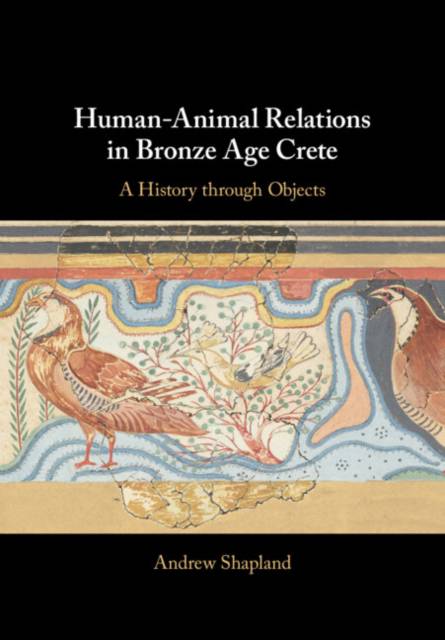
- Afhalen na 1 uur in een winkel met voorraad
- Gratis thuislevering in België vanaf € 30
- Ruim aanbod met 7 miljoen producten
- Afhalen na 1 uur in een winkel met voorraad
- Gratis thuislevering in België vanaf € 30
- Ruim aanbod met 7 miljoen producten
Zoeken
Human-Animal Relations in Bronze Age Crete
A History Through Objects
Andrew Shapland
Hardcover | Engels
€ 152,95
+ 305 punten
Omschrijving
Archaeologists have long admired the naturalistic animal art of Minoan Crete, often explaining it in terms of religion or a love of the natural world. In this book, Andrew Shapland provides a new way of understanding animal depictions from Bronze Age Crete as the outcome of human-animal relations. Drawing on approaches from anthropology and Human-Animal Studies, he explores the stylistic development of animal depictions in different media, including frescoes, ceramics, stone vessels, seals and wall paintings, and explains them in terms of 'animal practices' such as bull-leaping, hunting, fishing and collecting. Integrating zooarchaeological finds, Shapland highlights the significance of objects and their associated human-animal relations in the history of the palaces, sanctuaries and tombs of Bronze Age Crete. His volume demonstrates how looking at animals opens up new perspectives on familiar sites such as Knossos and some of the most famous objects of this time and place.
Specificaties
Betrokkenen
- Auteur(s):
- Uitgeverij:
Inhoud
- Aantal bladzijden:
- 290
- Taal:
- Engels
Eigenschappen
- Productcode (EAN):
- 9781009151542
- Verschijningsdatum:
- 12/05/2022
- Uitvoering:
- Hardcover
- Formaat:
- Genaaid
- Afmetingen:
- 182 mm x 254 mm
- Gewicht:
- 703 g

Alleen bij Standaard Boekhandel
+ 305 punten op je klantenkaart van Standaard Boekhandel
Beoordelingen
We publiceren alleen reviews die voldoen aan de voorwaarden voor reviews. Bekijk onze voorwaarden voor reviews.








